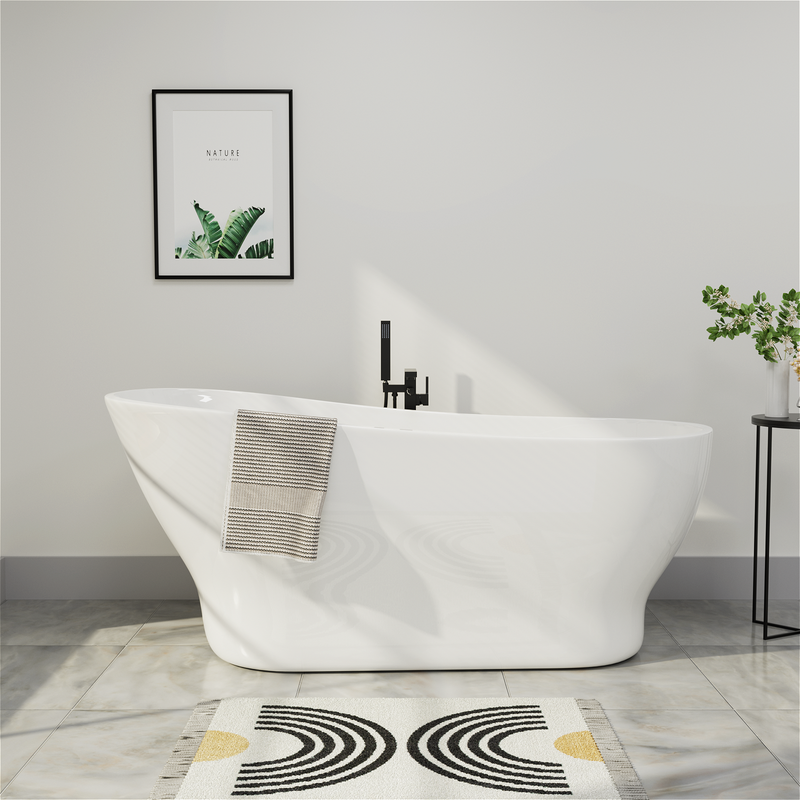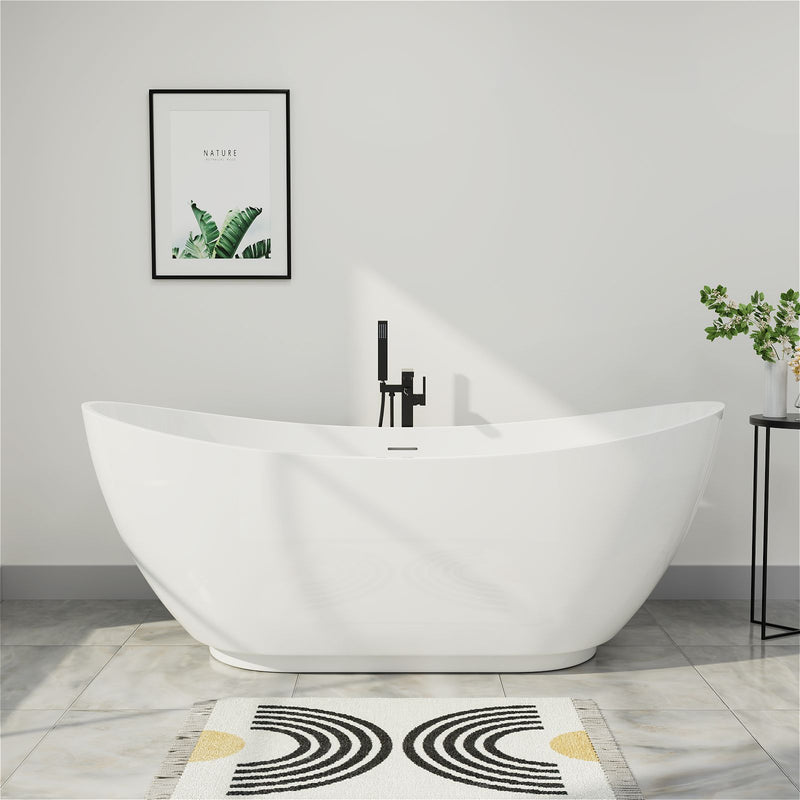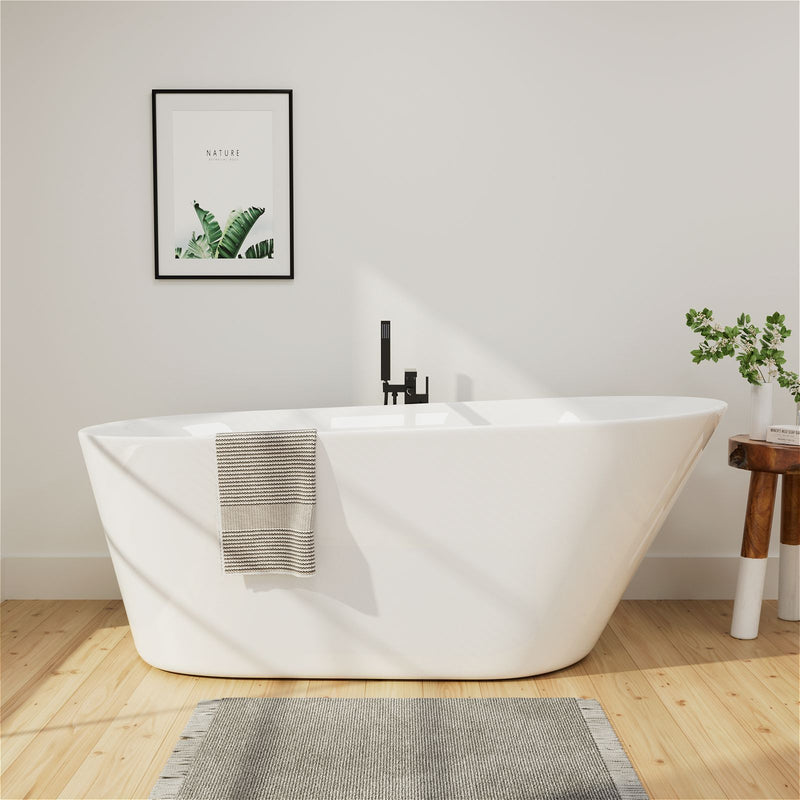Reglazing a bathtub has emerged as a popular and cost-effective alternative to full bathtub replacement, offering homeowners the opportunity to restore worn, stained, or outdated surfaces without the expense and disruption of complete removal and installation. This process involves applying a new coating system over the existing bathtub surface, creating a fresh, durable finish that can dramatically improve a bathroom's appearance. The longevity of a reglazed bathtub finish depends on multiple factors, including the quality of materials used, the skill of the applicator, proper surface preparation, and ongoing maintenance practices. Understanding these variables helps homeowners set realistic expectations and make informed decisions about whether bathtub reglazing represents a worthwhile investment for their specific situation. This comprehensive guide examines the typical lifespan of reglazed bathtubs, factors affecting durability, proper maintenance techniques, and signs that indicate when a reglazed surface requires attention or replacement.
What is Bathtub Reglazing?
Bathtub reglazing involves applying a specialized coating system to an existing bathtub surface to restore its appearance and functionality. The process typically begins with thorough cleaning and repairs to address any chips, cracks, or damage. Next, the surface is etched or abraded to create a texture that promotes coating adhesion. A primer is then applied to ensure proper bonding between the original surface and the new finish coat. Finally, a topcoat specifically formulated for bathtub surfaces is applied, creating a durable, waterproof seal that can significantly extend the life of an otherwise tired-looking bathtub.

The reglazing process addresses common bathtub issues, including surface scratches, stains, discoloration, and minor damage. When performed correctly using high-quality materials, reglazing can potentially extend a bathtub's functional life by several years. Unlike simply applying paint, professional bathtub reglazing systems are designed to withstand the unique challenges of bathroom environments, including constant moisture exposure, temperature fluctuations, and regular cleaning with various chemicals.
Typical Lifespan of Reglazed Bathtubs
The lifespan of a reglazed bathtub typically ranges from 5 to 10 years, though this can vary significantly based on several factors. Professionally applied reglazing using commercial-grade materials generally lasts longer than DIY applications, with high-quality professional jobs often reaching the upper end of this range or occasionally exceeding it. The specific coating system used also influences longevity, as two-part polyurethane coatings generally offer better durability and chemical resistance than epoxy-based products.
With proper installation and care, some reglazed bathtub surfaces can maintain their appearance and functionality for up to a decade, though this requires consistent maintenance and avoidance of practices that damage the finish. The original tub's condition before reglazing also impacts longevity—tubs with structural issues or recurring moisture problems may not be good candidates for reglazing, as these underlying problems can compromise the new surface.
Factors Affecting Bathtub Reglazing Longevity
Quality of Materials
The specific products used in the reglazing process significantly impact how long the finish will last. Commercial-grade coatings formulated specifically for bathtub surfaces typically offer superior durability compared to consumer-grade products. These professional materials create a thicker, more flexible film that better withstands the daily wear and tear of bathroom use. The chemical composition varies between products, with two-part polyurethane systems generally providing better resistance to cleaning chemicals, abrasion, and moisture penetration than epoxy-based alternatives.
Material quality extends beyond just the coating itself to include the primers, bonding agents, and repair compounds used in the process. A system approach using compatible products from the same manufacturer typically yields better results than mixing components from different product lines. The presence of UV stabilizers in the coating can also affect longevity, particularly in bathrooms with significant natural light exposure, though this is less critical than resistance to moisture and chemical exposure.
Surface Preparation
Proper surface preparation is arguably the most critical factor determining the longevity of a reglazed bathtub. Inadequate preparation represents the primary cause of premature reglazing failure. The preparation process must begin with a thorough inspection to identify any cracks, chips, or structural damage that requires repair before proceeding. All existing damage must be properly addressed using appropriate repair compounds designed for the specific bathtub material.

Cleaning is equally important, requiring the complete removal of all soap scum, body oils, mineral deposits, and previous coating residues. Specialized de-greasing agents effectively remove the invisible oil film that accumulates on bathroom surfaces, while acidic descalers dissolve mineral deposits from hard water. After cleaning, the surface must be completely dried, as moisture trapped beneath the new coating will inevitably lead to adhesion failure.
Surface profiling creates microscopic roughness on an otherwise smooth surface, establishing the mechanical bond necessary for coating adhesion. This can be achieved through chemical etching or, more commonly, through mechanical abrasion using sandpaper or abrasive pads. The goal is to create a uniformly dull surface without visible scratch patterns. After abrasion, all dust must be completely removed using tack cloths and vacuum systems designed for surface preparation.
Application Technique
The skill and experience of the person applying the reglazing products significantly influence the finished result and its longevity. Professional applicators typically use high-volume, low-pressure (HVLP) spray systems that produce a uniform, controlled film thickness. This method allows for consistent coverage without brush marks or uneven application that can create weak spots in the finish.
Environmental conditions during application dramatically impact reglazing performance. Ideal application temperatures typically range between 65-85°F with relative humidity below 70%. Extreme temperatures cause application issues—cold conditions slow curing and promote texture problems, while heat accelerates drying, potentially causing imperfections and poor film formation. High humidity introduces moisture contamination risk, causing discoloration in solvent-based products and extending drying times for water-based coatings.
Proper mixing procedures are essential regardless of product type. Two-part products require precise measurement of components using graduated mixing containers rather than approximate measurements. Inadequate mixing leads to uneven curing and reduced performance, while excessive mixing can introduce air bubbles that transfer to the applied film. The timing between coats and the total number of coats applied also affect the durability of the finished surface.
Maintenance Practices
How a reglazed bathtub is cleaned and maintained represents one of the most significant factors determining its lifespan. Proper maintenance begins with using only mild, non-abrasive cleaners and soft cloths or sponges. Harsh abrasive cleaners, scrub pads, and chemicals like bleach or ammonia can damage the finish over time. The golden rule of maintaining a reglazed surface is to avoid anything abrasive—whether tools or cleaning products—that can scratch and degrade the finish.
Regular care extends beyond cleaning methods to include practices that protect the surface. Using a bathtub mat with non-abrasive suction cups rather than adhesive pads helps prevent surface damage while providing additional safety. Promptly addressing any chips or damage with a touch-up kit provided by the reglazing professional can prevent small issues from becoming major problems that compromise the entire surface.
The frequency of use and what products are used in the bathtub also affect longevity. Bath oils with certain chemical compositions may interact negatively with some coating systems over time. Similarly, very hot water can potentially affect certain coatings, though most professional-grade products are formulated to withstand standard bathing temperatures.
Maintenance Guidelines for Reglazed Bathtubs
Cleaning Recommendations
Proper cleaning is essential for maintaining the appearance and longevity of a reglazed bathtub surface. For routine cleaning, use a soft cloth or sponge with mild, non-abrasive cleaners. A mixture of mild dish soap and water often suffices for daily maintenance. For more stubborn stains, a paste of baking soda and water can be gently applied and rinsed away. Avoid harsh chemicals, abrasive pads, or brushes that can scratch the glossy surface.
After each use, rinsing the tub with water prevents soap scum buildup, making deeper cleaning less frequent and less intensive. For periodic deep cleaning, specially formulated acrylic tub cleaners are available that clean without damaging the surface. Never use products containing acetone or other strong solvents, as these can permanently damage the reglazed finish.
Preventing Damage
Several practices can help prevent damage to reglazed surfaces. Avoid dropping sharp or heavy objects into the tub, as these can chip or crack the finish. Using non-slip mats or appliques with non-abrasive backing helps prevent accidental slips while protecting the surface. When storing products in the shower area, use containers with soft bottoms rather than metal or ceramic ones that can scratch the surface when moved.

Regular inspection of the caulking around the tub perimeter is important, as deteriorated caulk can allow water to seep behind the reglazed surface, potentially causing lifting or bubbling. Re-caulking as needed with a high-quality, mold-resistant silicone caulk helps maintain a watertight seal. Additionally, ensuring proper bathroom ventilation reduces moisture accumulation that can affect not just the reglazed surface but the surrounding walls as well.
Repairing Minor Damage
Even with careful maintenance, minor damage can occasionally occur. Small scratches can often be addressed using specialized acrylic polishing compounds designed for reglazed surfaces. Many professional refinishers provide touch-up kits for addressing minor chips or scratches that may develop over time. For more significant damage, spot repair may be possible, though this requires skill to blend properly with the surrounding area.
The success of repairs depends on the extent of damage and how promptly it's addressed. Small issues repaired quickly generally yield better results than waiting until damage has spread or worsened. For significant damage, consulting with a professional reglazing technician is advisable to determine whether spot repair or complete refinishing represents the better solution.
Signs Your Reglazed Bathtub Needs Attention
Loss of Gloss and Color Fading
Over time, reglazed surfaces may gradually lose their glossy appearance, becoming dull or matte. This often represents the first visible sign that the coating is approaching the end of its service life. Color fading may also occur, particularly in bathrooms with significant natural light exposure. While this doesn't necessarily mean the coating is no longer functional, it does indicate that the surface is degrading and may require attention in the foreseeable future.
Cracking, Peeling, or Bubbling
More serious signs of reglazing failure include visible cracking, peeling, or bubbling of the coating. These issues typically indicate that the bond between the coating and the underlying surface has been compromised. Cracking may appear as hairline fractures or more significant cracks in the surface. Peeling occurs when sections of the coating separate from the underlying surface, while bubbling often indicates moisture penetration beneath the coating. These conditions require prompt attention, as they will typically worsen over time and can lead to more extensive damage.
Staining and Discoloration
While reglazed surfaces are designed to resist staining, persistent discoloration that doesn't respond to cleaning may indicate that the coating's protective properties have diminished. This can be particularly noticeable with certain hair dyes, bath products, or mineral deposits from hard water. When stains cannot be removed through normal cleaning methods, it often signals that the surface is becoming porous and losing its protective qualities.

Frequently Asked Questions
What is the average cost of bathtub reglazing compared to replacement?
Bathtub reglazing typically costs 50-75% less than full bathtub replacement. While a complete replacement can cost $1,000-$4,000 or more including the new tub, plumbing adjustments, and potential wall repairs, professional reglazing generally ranges from $300-$600. The lower cost makes reglazing an attractive option for homeowners on a budget or those in rental properties.
Can I reglaze a bathtub myself, and how does DIY compare to professional results?
While DIY bathtub reglazing kits are available, they generally provide less durable results than professional applications. DIY kits typically contain brush-on or roll-on coatings that may not self-level as effectively as professionally sprayed finishes, potentially resulting in visible brush marks or an uneven surface. The materials in DIY kits are generally less durable and may begin showing wear within a year or two. Professional reglazing offers superior materials, proper surface preparation, and experienced application, typically resulting in a longer-lasting finish.
How long until I can use my bathtub after reglazing?
Most reglazing products require 24-48 hours before the tub can be used, with full curing taking up to 72 hours or more. The specific timeframe depends on the products used, environmental conditions, and the number of coats applied. Following the applicator's recommendations regarding cure time is crucial, as using the tub prematurely can compromise the finish's durability and longevity.
Is reglazing a permanent solution for an old bathtub?
Reglazing is not considered a permanent solution but rather a process that extends the functional life of a bathtub. While it typically lasts 5-10 years, the underlying tub remains the same, and eventual replacement may still be necessary. Reglazing addresses surface issues rather than structural problems, so tubs with significant structural damage are generally not good candidates for the process.
What types of bathtub damage cannot be fixed by reglazing?
Reglazing cannot repair structural problems, extensive cracking, or persistent moisture issues. Tubs with these problems should be replaced rather than refinished. Additionally, reglazing is primarily a cosmetic solution, so it won't address functional issues with the tub itself, such as plumbing problems or permanent deformation of the underlying material.
Does reglazing make the bathtub surface slippery?
A properly applied reglazing finish should not make the surface significantly more slippery than the original bathtub surface. Many reglazing products can be applied with additives to increase slip resistance if requested. For added safety, using a non-slip mat is recommended regardless of the tub surface.
Can I change the color of my bathtub through reglazing?
Yes, one of the advantages of reglazing is the ability to change the bathtub's color. While white is the most common choice, most professional reglazing companies offer a range of color options. Custom color matching may be available at an additional cost, allowing homeowners to coordinate the tub with updated bathroom decor.
Conclusion
Bathtub reglazing represents a cost-effective solution for homeowners seeking to update their bathroom without the expense and disruption of full replacement. When performed by a qualified professional using high-quality materials, reglazing can restore a bathtub's appearance and extend its functional life by 5-10 years. The longevity of the finished surface depends on multiple factors, with proper surface preparation, high-quality materials, professional application, and consistent maintenance all playing crucial roles in determining how long the results will last.
Homeowners should carefully assess their tub's condition, weigh the costs and benefits, and select an experienced professional if pursuing reglazing. With proper maintenance, a reglazed bathtub can provide years of reliable service while enhancing the bathroom's overall aesthetic. Understanding the typical lifespan and maintenance requirements helps set realistic expectations and ensures satisfaction with the reglazing investment.





